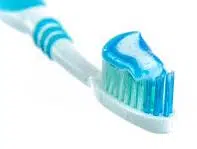The first step we are going to take is to proceed to know the etymological origin of the term toothpaste. In this case we can state that it is a word that derives from Latin. Exactly it emanates from the sum of “dens, dentis”, which can be translated as “tooth”, and the verb “fricare”, which means “to rub”.
Toothpaste is a word that, by mistake, is often mentioned in different ways. One of the most common is toothpaste , although toothpaste is also used. However, the only concept accepted by the Royal Spanish Academy ( RAE ) is toothpaste.
 All of these notions refer to a substance that is used to clean teeth . Generally it is a paste , although there are also powders that perform the same function .
All of these notions refer to a substance that is used to clean teeth . Generally it is a paste , although there are also powders that perform the same function .
A toothpaste, therefore, is rubbed on the teeth to clean them and to protect them from diseases .
Another series of facts that are also interesting about toothpaste is that the first one was created in Ancient Egypt. Yes, about 4,000 years ago was when the Egyptians created that first toothpaste, which was called clisterate and was made from elements such as eggshell, myrrh, pumice, ox nails, salt. , water and pepper.
Although it has a long history, the truth is that this oral hygiene product did not become popular or see its use extend until the 19th century.
Toothpaste is usually placed on the bristles of a brush (the toothbrush ). The person should rub the bristles covered by the cream or paste on the teeth and then rinse with water.
Toothpastes are made from calcite, sodium fluoride, sodium monofluorophosphate, water, and other substances. They contain moisturizing, flavoring, coloring and abrasive elements so that the user experience is pleasant as well as effective.
There is a wide variety of toothpastes on the market, although among the most significant we can highlight the following:
-Anti-tartar, which, as its name indicates, prevents the formation of tartar on the teeth.
-Toothpastes to fight against dental hypersensitivity.
-Anticaries that do their part to prevent the appearance of cavities. They usually contain fluoride.
-Whitening agents, which help teeth remain very white.
-Anti-plaque, which prevent cavities and the appearance of plaque while protecting the gums.
It is important to note that, according to dentists ' advice, the use of toothpaste is not enough to guarantee oral hygiene. It is advisable to complement this product with mouthwash (a liquid used after brushing to eliminate microorganisms and combat halitosis) and dental floss (a filament that is passed between the teeth to remove very small pieces of food that may have remained in the mouth). mouth).
